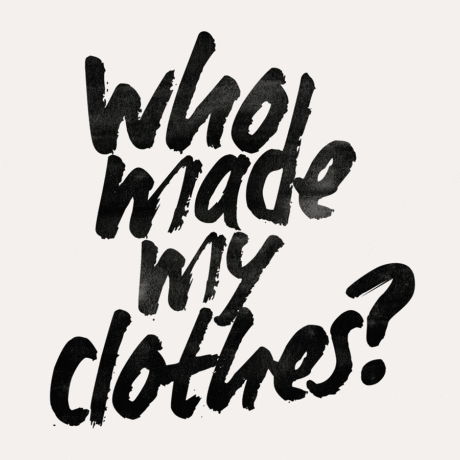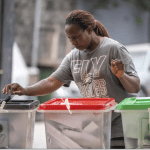Ethiopia’s Sustainable Fashion Revolution: Weaving a Better Future
In the bustling workshops of Addis Ababa and the verdant cotton fields of the Omo Valley, a fashion revolution is taking shape. Ethiopia, a country with a rich textile heritage dating back millennia, is emerging as an unlikely epicenter of sustainable fashion. Driven by innovative nonprofits and social enterprises, this movement is not just about creating beautiful garments—it’s about weaving a fabric of social change, environmental stewardship, and economic empowerment.
The Ethiopian Textile Tradition
Ethiopia’s relationship with textiles is as old as the country itself. From the intricate patterns of traditional Habesha kemis dresses to the hand-woven cotton gabis (shawls), textile production has long been an integral part of Ethiopian culture and economy.
“Our textile tradition is not just about clothing; it’s about identity, community, and craftsmanship,” explains Dr. Seble Bekele, a textile historian at Addis Ababa University. “What we’re seeing now is a renaissance of these values, adapted for the modern, global market.”
The Rise of Ethical Fashion
In recent years, Ethiopia has become an attractive destination for international fashion brands seeking to diversify their supply chains. However, it’s the homegrown, ethical fashion initiatives that are truly transforming the industry.
One such pioneer is Sabahar, a social enterprise founded in 2004. Sabahar works with traditional weavers, mostly women, to create high-quality, handwoven textiles using organic, locally-sourced materials like cotton and silk.
“We’re not just making beautiful products; we’re preserving skills, creating dignified employment, and promoting sustainable practices,” says Kathy Marshall, Sabahar’s founder. “Every piece tells a story of Ethiopian craftsmanship and creativity.”
Empowering Women Through Fashion
Women’s empowerment is a central theme in Ethiopia’s sustainable fashion movement. Nonprofit organizations like Ellilta Products are using fashion as a vehicle for social change, providing training and employment opportunities for women escaping challenging circumstances.
Ellilta’s “Ellilta Women at Risk” program trains women in textile production, from sewing to quality control. The women produce a range of products, from fashion accessories to home décor items, which are sold both locally and internationally.
“Fashion can be a powerful tool for transformation,” says Serawit Friedmeyer, Ellilta’s Executive Director. “We’re not just teaching women to sew; we’re helping them rebuild their lives and reclaim their dignity.”
Sustainable Materials: From Cotton to Coffee
Sustainability in Ethiopian fashion extends beyond fair labor practices to the very fibers used in production. Social enterprises are pioneering the use of eco-friendly materials, often drawing on Ethiopia’s agricultural abundance.
Afrominima, a Addis Ababa-based sustainable fashion brand, has gained international attention for its innovative use of Ethiopian cotton. The company works directly with small-scale organic cotton farmers, ensuring fair prices and promoting sustainable farming practices.
“Ethiopian cotton is some of the finest in the world,” says Samrawit Tessema, Afrominima’s founder. “By creating a market for organic, sustainably-produced cotton, we’re not just making better clothes; we’re supporting entire farming communities.”
But it’s not just traditional textiles getting the sustainable treatment. Zeleman Productions, a social enterprise, has developed a fabric made from recycled coffee grounds—a nod to Ethiopia’s famous coffee industry. The resulting material is naturally odor-resistant and quick-drying, perfect for activewear.
Circular Fashion: Closing the Loop
As awareness of fashion’s environmental impact grows, several Ethiopian organizations are embracing the principles of circular fashion—designing out waste and pollution, keeping products and materials in use, and regenerating natural systems.
Suns Orga
nic, a nonprofit based in Addis Ababa, runs a “Fabric Waste to Fashion” program. They collect fabric scraps from garment factories and work with local artisans to transform this waste into new products, from patchwork garments to home accessories.
“We’re challenging the idea of waste,” explains Kidist Alemu, Suns Organic’s Program Director. “In our workshops, every scrap of fabric has value and potential. It’s a mindset we’re trying to instill across the industry.”
Traditional Crafts in the Modern Market
Ethiopia’s sustainable fashion movement is also breathing new life into traditional crafts. Social enterprise Sabahar, mentioned earlier, has been instrumental in reviving Ethiopia’s ancient silk production techniques.
Working with communities in the Ashenge area, Sabahar has reintroduced sericulture (silk farming) and traditional silk weaving. The resulting products—scarves, shawls, and home textiles—blend age-old techniques with contemporary design, finding eager markets both at home and abroad.
“We’re proving that tradition and innovation can go hand in hand,” says Marshall. “By valuing our heritage and adapting it for modern markets, we’re creating sustainable livelihoods and preserving cultural knowledge.”
Fashion Education for a Sustainable Future
Recognizing that long-term change requires education, several organizations are focusing on training the next generation of Ethiopian fashion professionals.
Next Fashion Design, a nonprofit fashion school in Addis Ababa, offers courses in sustainable design practices. Their curriculum covers everything from zero-waste pattern cutting to upcycling techniques.
“We’re nurturing a new generation of designers who see sustainability not as a constraint, but as a source of creativity,” says Fikirte Addis, the school’s founder and a renowned Ethiopian designer herself.
Challenges and Opportunities
Despite the progress, Ethiopia’s sustainable fashion sector faces several challenges. Limited access to capital, inadequate infrastructure, and the need for more robust supply chains are ongoing issues.
There’s also the challenge of scale. While artisanal, small-batch production is at the heart of many sustainable fashion initiatives, there’s a need to find ways to increase production without compromising on ethics or quality.
“The demand for ethical, sustainable fashion is growing globally,” says Dr. Bekele. “The challenge for Ethiopia is to meet this demand while staying true to the principles of sustainability and fair labor.”
A Model for Africa and Beyond
Ethiopia’s approach to sustainable fashion offers valuable lessons for other countries, both in Africa and beyond. By leveraging traditional skills, embracing innovation, and prioritizing both social and environmental sustainability, Ethiopia is charting a unique path in the global fashion industry.
“What’s happening in Ethiopia is truly inspiring,” says Simone Cipriani, Head of the Ethical Fashion Initiative at the International Trade Centre. “It shows that fashion can be a force for good, contributing to sustainable development and preserving cultural heritage.”
The Future of Ethiopian Fashion
As Ethiopia continues to position itself as a hub for sustainable fashion, the role of nonprofits and social enterprises will remain crucial. These organizations are not just producing clothing; they’re reimagining what a responsible, equitable, and culturally rich fashion industry can look like.
From the silk weavers in Ashenge to the young designers in Addis Ababa, Ethiopia’s sustainable fashion movement is creating beautiful garments while weaving a fabric of social change. As the country’s fashion industry grows, it’s not just dressing the world—it’s offering a vision of a more sustainable, ethical future for fashion globally.























